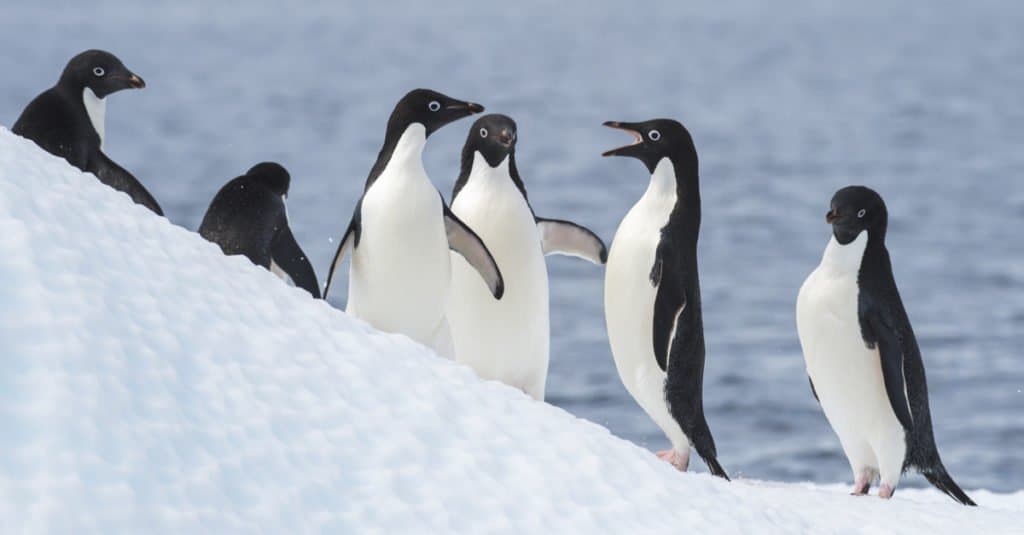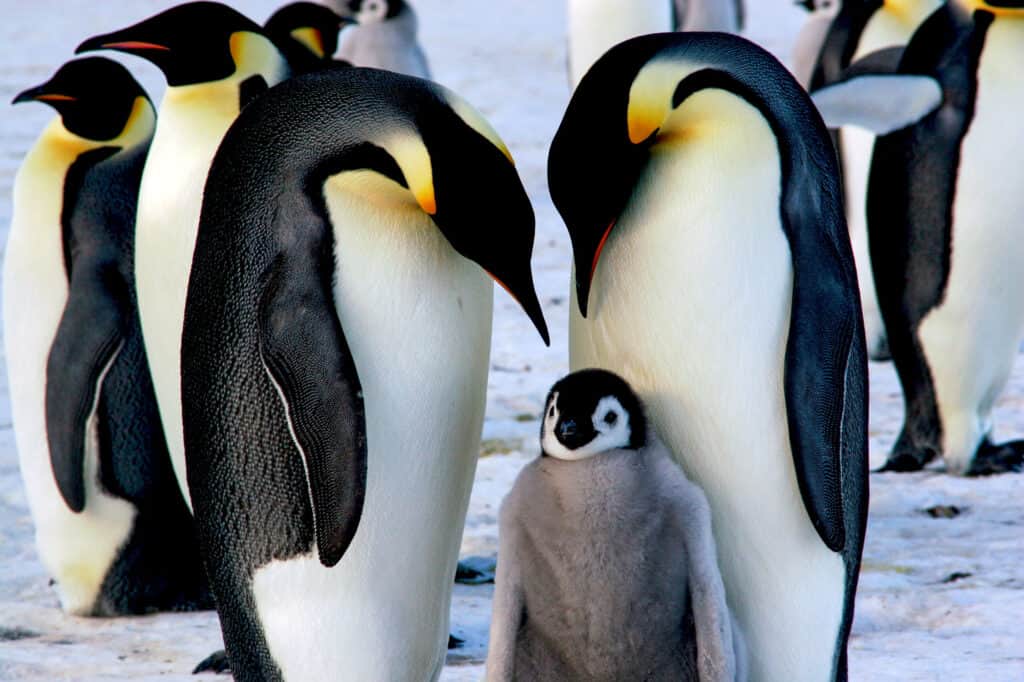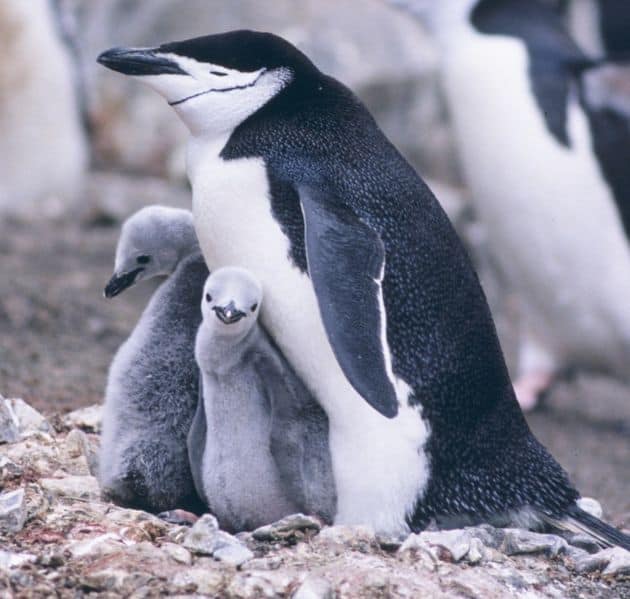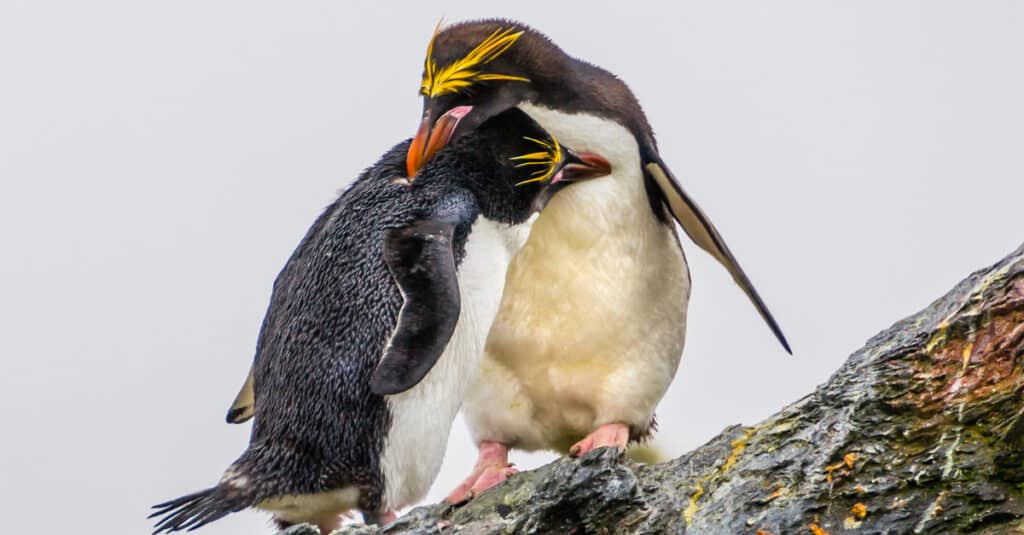Many animals mate for life, including 90% of the bird population. Swans, whooping cranes, and bald eagles are all examples of birds that are extremely loyal and monogamous. But what about penguins? Do these aquatic flightless birds mate for life?
The answer depends on your definition of monogamy and the specific penguin species. All species of penguins practice seasonal monogamy, meaning each pair partners up for the entire breeding season taking care of parental responsibilities together. However, not all species of penguins are sexually monogamous, meaning they may copulate with more than one penguin. Therefore, the answer to whether or not penguins mate for life is ultimately no.
What Determines if Penguins Mate for Life?
According to a 2013 literature review published in the journal Comptes Rendus Biologies, 89 percent of Galapagos penguins stay with their same partner year after year while only 15 percent of emperor penguins do. Another study, conducted in 1999 and published in the journal The Auk, determined that while most penguin species do return to the same mate yearly, fidelity does occur with frequent squabbles breaking out in penguin huddles. Fidelity rates vary but occur between 59 and 89 percent of the time.
Other factors that determine whether or not penguins mate for life include the environment in which they live, the time of year in which they breed, and the various mating rituals they practice. Let’s take a look at the most common types of penguins, the factors surrounding their breeding, and if they practice monogamy.
Adélie and Gentoo Penguins

Although the Adélie penguin’s main food source is krill and small fish, they will occasionally feed on
jellyfish
.
©vladsilver/Shutterstock.com
Adélie penguins and gentoo penguins are quite faithful, pairing up with the same partner approximately 89% of the time. For these captivating birds, the breeding season takes place in the summer between November and February along the ice-free coasts of the Antarctic. They win the hearts of their counterparts by meticulously selecting pebbles and stones to build shiny attractive nests. If she accepts the offering, the two will continue to build their nest in preparation for incubation. Sometimes, though, a male is unable to find the right stones. When this happens, they may steal pebbles from other male penguins erupting in a few squabbles along the way.
Little Penguins

The little penguin breeds throughout the year and has the shortest breeding cycle.
©Khoroshunova Olga/Shutterstock.com
The smallest of the penguin species, little penguins usually breed on offshore islands along parts of the mainland coast. They like to find a spot under the sand or soil or within a cave or crevice to stay clear of predators. Males begin building nests between May and September and aim to create the warmest, safest nest in order to attract a mate. Once paired up, the two remain faithful to each other throughout the breeding season. Both sexes take responsibility for the incubation process. Little penguins typically hatch one to four eggs. They also generally return to the same breeding spot and mate with the same partner year after year.
King Penguins

The king penguin has the longest breeding cycle of any penguin species lasting 14-16 months.
©Ondrej Prosicky/Shutterstock.com
While king penguins mate with only one female each season, they are not as likely to keep the same mate each year. In fact, approximately 70% find new mates each year. Breeding occurs along the flat shorelines adjacent to the Antarctic Ocean between November and March. Invisible to the human eye, these charismatic birds are able to reflect ultraviolet light (UV) from their bills to attract mates. Each female king penguin lays only one egg, and both parents take turns keeping it warm. Rather than utilizing a nest like other penguin species, the king penguin carries the single egg around with them at all times on top of their feet.
Emperor Penguins

Without the warmth of their parent’s brood pouches,
emperor penguin
chicks would die in just a matter of minutes due to the cold Antarctic temperatures.
©iStock.com/BernardBreton
Like the king penguin, emperor penguins only hatch one egg. They too can reflect ultraviolet light off their bills. But unlike the king penguins, emperor penguins return to the same mate year after year. When courting, the male uses a variety of methods to entice females to copulate, including raising their flippers and heads, swinging their heads from side to side, and practicing a fancy walk. Because they live and breed completely on ice during the Antarctic winters, there are no materials to build a nest with. Instead, the male emperor penguin keeps the egg on his feet and keeps it warm using a piece of skin folded over called a brood patch.
Chinstrap Penguins

Chinstrap penguins have no teeth, but display spines on their tongues!
©US National Oceanic and Atmospheric Administration / Public domain, via Wikimedia Commons – License
Named such due to the narrow black bands under their heads, chinstrap penguins dwell among a variety of islands in the Southern Pacific and Antarctic Ocean. Mating season lasts from November through December with the male arriving at the colony about five days before the females to prepare the nest. They seek out the cavity in the rock they used the year before and build their nest using rocks and bones they’ve foraged. These nonmigratory birds court their mates by beating their chests with their flippers and raising their heads to screech. Arguments often ensue over nest space, causing showdowns between the males. This often involves pointing, staring, and even charging if one deems it necessary. Both parents share in incubation responsibilities.
Macaroni Penguins

Like many other penguins, macaroni penguins have been known to engage in same-sex relationships.
©Tetyana Dotsenko/Shutterstock.com
These social animals are very vocal and have a unique yellow crest on their heads to let potential mates know they are healthy enough to mate. Those with the brightest shades of yellow are considered the most desirable. They spend most of their lives at sea but come on shore for the breeding season, which starts in November and runs through December. They will also fight with other macaroni penguins to protect their nests often engaging in what is known as, “bill-jousting.” This is when the birds lock their bills and wrestle. It can also involve batting their flippers and pecking at each other’s necks. Aside from their yellow crest, courting involves bowing, braying, and trumpeting. The female lays two eggs, and both share the responsibility of incubation.
Comparison of Mating Rituals and Penguin Mating Facts
| Penguin Species | Mating Ritual | Breeding Environment | Breeding Season | Do They Mate for Life? |
|---|---|---|---|---|
| Adélie Penguin | Meticulously picks out rocks and pebbles to build a unique, decorative nest. | Rocky, ice-free coasts of the Antarctic continent. | During the Antarctic summer from November to February. | Once they find a mate, they remain partners for the entire breeding season. They breed with the same partner annually 89% of the time. |
| Gentoo Penguin | Utilizes rocks and stones to build the most attractive nest. | Ice-free areas like flat, rocky beaches and low-lying cliffs. | During the Antarctic summer from November to February. | Once they find a mate, they remain partners for the entire breeding season. Eleven percent of the time, they will find a new partner the following year. |
| Little Penguin | Tries to outdo other little penguins by building a warm and safe nest. | They like to borrow under sand or soil or inside crevices along parts of the mainland coast. | Between May and September. | Unless one of them becomes deceased, they generally stay together for life. |
| King Penguin | Utilizes the ultraviolet light from its bill. | They breed along the flat shorelines adjacent to the Antarctic Ocean. | Between November and March. | Once they find a mate, they remain together throughout the breeding season. However, 70% will find a new mate each year. |
| Emperor Penguin | Attracts a mate using the ultraviolet light from their bills. | Directly on top of the Antarctic Sea once it’s completely made of ice. | During the Antarctic winter from May through August. | Unless one of them becomes deceased, they generally stay together for life. |
| Chinstrap Penguin | He beats his chest with flappers and lets out a loud screeching noise. | Cavities within the rocks amongst the islands in the Southern Pacific and Antarctic Oceans. | Mating and breeding season runs from November through December. | Unless one of them becomes deceased, they generally stay together for life. |
| Macaroni Penguin | Attracts a mate through bowing, baying, and trumpeting. | While they spend their lives at sea, they come on shore for mating and breeding. | Mating and breeding season runs from November through December. | While they generally stay with one mate during the breeding season, 25% find new mates each season. |
The photo featured at the top of this post is © Sergey Didenko/Shutterstock.com
Thank you for reading! Have some feedback for us? Contact the AZ Animals editorial team.






